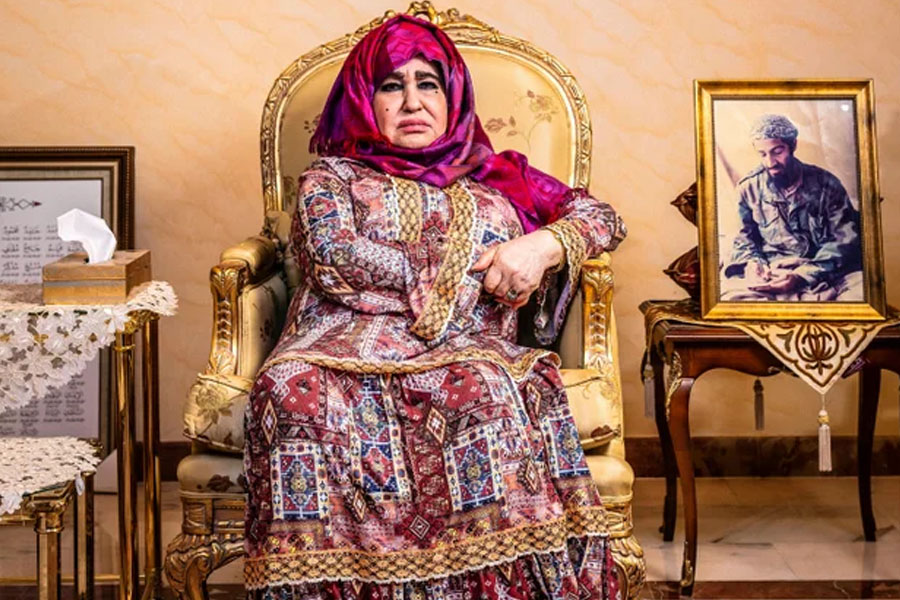Basic Information
| Field | Details |
|---|---|
| Name | Khairiah Sabar |
| Also known as | Khairiah Sabir, Khairiah Saber (variant spellings in English) |
| Approximate year of birth | 1949–1950 (reported) |
| Nationality | Saudi Arabian (reported) |
| Publicly known for | Being one of Osama bin Laden’s wives and the mother of Hamza bin Laden |
| Marital status | Widow of Osama bin Laden (1957–2011) |
| Children | Hamza bin Laden (born 1989) |
| Reported background | Described in some accounts as educated; sometimes said to have studied or worked in fields related to child psychology (reports vary) |
| Notable residence | Lived in the Abbottabad compound until May 2011; later repatriated to Saudi Arabia (reported) |
Early Life and Background
Khairiah Sabar enters the public record not through personal celebrity but through proximity to global events. Most English-language profiles place her birth around 1949–1950, noting that she was several years older than Osama bin Laden. Accounts often describe her as educated, with some secondary sources mentioning experience connected to child development or psychology; these details, while frequently repeated, are not documented with the precision you might expect for a public figure.
Her identity, like a name carried across borders, appears in multiple English spellings—Sabar, Sabir, Saber. This variance is typical when Arabic names are romanized and has shaped how information about her travels through media archives.
Marriage, Household, and Family
By the mid-1980s, Khairiah is widely reported to have married Osama bin Laden. She is consistently identified as the mother of Hamza bin Laden, born in 1989. Within public reporting, she is portrayed as one of the more senior wives, and later as part of the tight, highly controlled household that surrounded Osama during years of clandestine living.
In 2011, she was among the women living in the Abbottabad compound. Reports also place other wives in that household, including Amal al-Sadah and Siham Sabar. After the raid that killed Osama bin Laden, Pakistani authorities detained the surviving family members before arranging their repatriation.
A Life Across Borders
Khairiah’s story is marked by anonymity amidst infamy—an existence at the edge of a public narrative dominated by men’s names and militant histories. She surfaces in the record at border crossings, hospital rooms, and interrogations, yet very little is known about her independent pursuits. There are no verified lectures, publications, or professional profiles commonly associated with her name in English-language sources. Instead, what remains are fragments: mentions of education, the discipline of a quiet household, and a role in parenting a son who would later be thrust into the global spotlight.
2011 Abbottabad and Aftermath
On May 2, 2011, the Abbottabad compound was raided. Khairiah—identified as one of the wives on site—was taken into custody alongside other family members. In the months that followed, officials questioned and processed the women, leading to charges related to immigration irregularities and, eventually, deportation. Reporting indicates that she was sent to Saudi Arabia, where relatives of Osama bin Laden had resources and extended family networks.
This period, starkly visible in headlines, is the most documented phase of her life: the raid; the brief medical accounts; the administrative decisions that relocated the family; and finally the silence that followed.
Hamza bin Laden: Son and Heir to a Name
Hamza bin Laden (born 1989) is frequently mentioned alongside Khairiah as her son. His emergence in militant propaganda during the mid-2010s, his designation by governments as a terrorist, and reporting about his death between 2017 and 2019 kept Khairiah’s name present in news cycles as a contextual footnote. Public accounts also reference that Hamza had a son, reportedly named Osama—making Khairiah a grandmother in the genealogies widely cited in news coverage.
For Khairiah, these events function like distant thunder—always audible, sometimes deafening, but never quite enough to illuminate the private spaces she occupied.
Name Variants and Identity
Spelling variations tell a subtle story. Arabic names often appear differently in English: Sabar, Sabir, or Saber all trace back to the same person in public reporting. For a figure like Khairiah—who rarely spoke publicly, if at all—these variations amplify the challenges of research. They also serve as a reminder that what we know is mediated by translation, distance, and the priorities of newsrooms during moments of crisis.
Family Overview
| Name | Relationship to Khairiah Sabar | Key Dates | Notes |
|---|---|---|---|
| Osama bin Laden | Husband (deceased) | 1957–2011 | Founder of al-Qaeda; killed in 2011 Abbottabad raid |
| Hamza bin Laden | Son | Born 1989 | Prominent in al-Qaeda media; reported killed (announcements 2017–2019) |
| Osama (grandson) | Grandson | n/a | Reported as one of Hamza’s children |
| Amal al-Sadah | Co-wife in household | Married 2000 (reported) | Lived in Abbottabad; injured during raid (reported) |
| Siham Sabar | Co-wife in household | n/a | Reported as another wife in the Abbottabad compound |
Timeline Snapshot
| Year/Date | Event |
|---|---|
| c. 1949–1950 | Reported birth of Khairiah Sabar (name variants: Sabir/Saber) |
| Mid-1980s (reported) | Marriage to Osama bin Laden |
| 1989 | Birth of Hamza bin Laden, her son |
| 1990s–2000s | Life within bin Laden’s extended household across various locations |
| May 2, 2011 | Abbottabad raid; Khairiah detained with other family members |
| 2011–2012 | Detention in Pakistan; subsequent deportation and repatriation to Saudi Arabia |
| 2015–2019 | Continued mentions in media through coverage of Hamza bin Laden |
| 2017–2019 | Public announcements and reporting about Hamza’s death |
What Is Known—and What Isn’t
For most public figures, biographies are woven from interviews, speeches, and professional achievements. For Khairiah Sabar, the thread is different. Information about her is sparse, often secondhand, and tightly bound to the actions of others. This creates a silhouette rather than a portrait: a woman described as educated; a wife living within layered households; a mother whose son became a headline; a participant in world events without seeking a spotlight.
When details are scarce, myths multiply. Caution is warranted, especially with claims that promise specifics without documentation. The most reliable contours of her life remain those repeatedly confirmed across mainstream reporting: her marriage to Osama bin Laden, her role as Hamza’s mother, her presence in the Abbottabad compound, and her subsequent repatriation.
FAQ
Who is Khairiah Sabar?
She is publicly identified as one of Osama bin Laden’s wives and the mother of Hamza bin Laden.
Why are there different spellings of her name?
Arabic names are commonly romanized in multiple ways; Sabar, Sabir, and Saber refer to the same person in English-language reporting.
When was she born?
Most references place her birth around 1949–1950, but exact dates are not widely documented.
Was she in the Abbottabad compound in 2011?
Yes, she is reported to have been among the women present during the raid and was subsequently detained.
What happened to her after the raid?
She was held by Pakistani authorities and later repatriated to Saudi Arabia.
Is she the mother of Hamza bin Laden?
Yes, public records consistently identify her as Hamza’s mother.
Did she have a professional career?
Some accounts describe her as educated and mention child psychology, but details are limited and not comprehensively documented.
Does she have a public profile or social media?
No widely accepted public accounts or profiles are attributed to her in mainstream reporting.
Are there other family members linked to her?
Yes, she is linked to Osama bin Laden (her husband) and to her son, Hamza; a grandson named Osama is also reported.
What remains uncertain about her life?
Precise biographical details—such as full birth date, academic records, and independent public activities—remain unclear in open sources.



